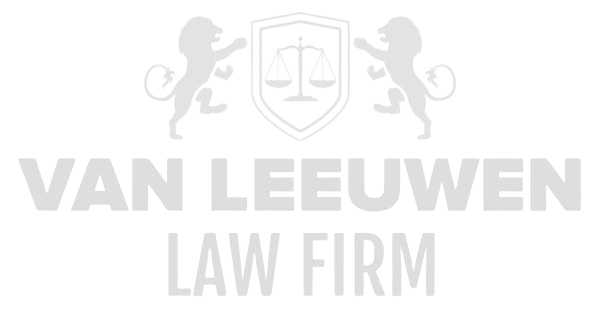Economic crime is no longer a trivial marginal phenomenon; it is an insidious poison that embeds itself in the bloodstream of the global economy, eroding the very foundations of financial integrity. Those who imagine this is merely a matter of individual fraudsters or local money launderers fundamentally misjudge the actual threat: a sophisticated, cross-border network of actors that thrives in the opaque labyrinth of financial instruments and exploits the gaps in oversight. The line between legitimate and illicit capital is increasingly blurred. What appears as tax optimization is often indistinguishable from organized tax avoidance; what is packaged as legitimate business services frequently conceals bribery or money-laundering structures. This creates a gray zone in which criminals and reputable multinationals intersect in the shadows, with public institutions acting as unwilling accomplices. Meanwhile, as regulators struggle to keep pace, the rule of law is gradually hollowed out by financial manipulations that undermine the democratic legitimacy of legislation and oversight.
It is precisely this recognition—that economic crime is not an isolated incident but the manifestation of a structural, multidimensional risk—that calls for a radical shift in approach. It is no longer sufficient to prosecute individual fraudsters on a case-by-case basis or to issue reactive sanctions. What is required is a holistic approach that integrates prevention, detection, repression, and remediation within an unyielding framework. Achieving this demands more than sophisticated legislation or polished compliance manuals; it requires a culture of radical transparency and accountability embedded in both public institutions and private enterprise. It demands that legal professionals and regulators have the courage not merely to address symptoms, but to expose the very system of gray money flows. Above all, it requires political will that goes beyond cosmetic measures, confronting the corrosive entanglement of legitimate and illicit capital head-on. For as long as economic crime is tolerated as an inconvenient byproduct of globalization, it erodes not only markets and institutions but the very core of the rule of law itself.
Challenges of Cross-Border Economic Crime
The classic image of theft or simple fraud has been relegated to myth when examining the dimension of cross-border economic crime. Multinational network structures, often established through shell companies in jurisdictions with minimal reporting requirements, facilitate the concealment of money flows and create an impenetrable web of transactions. This makes it impossible to accurately trace the origin and destination of suspicious funds without advanced forensic analysis tools. Moreover, such networks are often so intertwined with legitimate trade or investment activities that each individual party can invoke plausible deniability. The legal challenge arising here goes beyond mere evidence gathering; it extends to the question of to what extent national legal systems are willing and able to effectively cooperate, operationalize formalized mutual legal assistance, and apply comparable standards for criminalization.
In this contextualized administrative and technological complexity, any analysis of economic crime must recognize that simply increasing maximum penalties or raising fines will prove insufficient. The modern criminal exploits the asymmetric speed of information and capital flows, combined with the diversity of jurisdictions, to perpetually stay a step ahead of enforcement agencies. The consequence is that traditional investigative paradigms are not only challenged but often already outdated. The necessity of a system that continuously monitors new trends in criminal activity—think digital currencies, decentralized finance, and artificial intelligence—cannot be underestimated. Without such anticipatory capacity, jurisdictions remain reactive and powerless to contain the original source of criminal innovation.
Due to the enormous scale and varied methods of cross-border financial crimes, a situation also arises in which victims—ranging from governments to small private individuals—receive inadequate legal protection. Legal proceedings against international networks often drag on for years, with jurisdictions sometimes responding sluggishly or erecting logistical barriers for political reasons. In that gray zone between investigation, prosecution, and recovery, irreparable damage is inflicted: public funds diverted from essential sectors such as healthcare, infrastructure, and education; market distortion affecting prices and discouraging fair entrepreneurship. There is therefore a need for a coordinated, transnational strategy that not only exchanges accusations but flawlessly organizes case file sharing, joint investigations, and mutual extradition procedures.
Proactive Risk Management in the Financial Sector
Effective combating of economic crime begins with establishing a robust risk management system. This system must not only respond ex post to deviations but also include ex ante scenario analyses and stress tests that anticipate potential threats. By utilizing advanced data analytics and predictive algorithms, signals of unusual patterns can be detected at an early stage. It is not merely about a single tool or procedure but an integrated architecture where data science, legal insight, and operational compliance reinforce each other. Such a dynamic platform not only promotes the identification of suspicious transactions but also creates a learning process in which the financial institution constantly adjusts its response mechanisms to new threats.
Organizationally, risk management requires clear role distribution and mandate structures so that ethical and legal compliance is embedded at the core of decision-making. This implies that departments such as risk, compliance, legal affairs, and internal audit do not operate as silos but are intertwined in a permanent consultative mechanism with commercial units. Through this joint governance model, a culture emerges in which attention to fraud and corruption is not experienced as a nuisance but as an integral part of sustainable business operations. The internal reporting system—including early warning reports to the supervisory board—thus forms an indispensable link in the chain of accountability and oversight.
At the same time, risk management must be flexible enough to respond to evolving laws and regulations, both nationally and internationally. Regulatory bodies such as the Financial Action Task Force (FATF) and the European Banking Authority periodically update their standards, providing insights that must be directly translatable into internal procedures. Only by continuously iterating against the most recent guidelines can risk identification and mitigation remain coherent with international norms. In this way, a resilient system is created that not only remedies future manipulation techniques but in many cases prevents them.
Strengthening Due Diligence and Compliance Programs
Integrating thorough due diligence into business processes is undeniably the foundation of all preventive measures against economic crime. By conducting extensive background analyses on potential business partners, executives, and ultimate beneficiaries of transactions, the risk of inadvertently facilitating criminal activities is significantly reduced. These investigations must be multidimensional, involving not only publicly accessible sources but also information from sanctions lists, judicial registers, and specialized due diligence databases. Selecting the right sources and verifying information in relation to current sanctions and risk indicators is of decisive importance.
Operationalizing these due diligence processes within a compliance program requires a balance between thoroughness and efficiency. On the one hand, an organization must demonstrate that all reasonable steps have been taken to ensure integrity; on the other hand, business speed should not be unnecessarily delayed. By combining automated workflows with advanced AI-supported text analysis, risky signals can be quickly identified, after which specialized analysts can conduct in-depth assessments. This creates a hybrid process in which the power of technology is used to enhance, not replace, human expertise.
Furthermore, ongoing training and certification of employees are indispensable to keep the compliance program alive. Regular refresher courses on emerging criminal tactics, changes in legal requirements, and best practices for reporting and escalation foster a compliance culture where vigilance is not optional. Specific modules for management, front office, and back office ensure that each functional domain knows exactly which signals are relevant and which escalation paths must be followed. Only when every link in the organization understands that due diligence is not merely an administrative burden but an essential bond of trust can the entire program perform optimally.
Integral Sanction Mechanisms
Integral sanction mechanisms serve not merely as a stick behind the door but as a finely woven system in which financial penalties, administrative measures, and criminal prosecutions reinforce each other. Each individual instrument—whether administrative fines for missing customer due diligence or prison sentences for top executives involved in multiple frauds—loses its effectiveness when it is not embedded within a coherent set of enforcement options. Designing such a system requires careful calibration according to the nature and severity of the violation, continuously recalibrating the balance between preventive deterrence and proportional repression. Only in this way does a coherent palette of sanctions emerge that, in practice, ensures comprehensive resilience against economic undermining.
Moreover, the effectiveness of sanctions is determined by the speed and predictability with which they are imposed. Prolonged procedures undermine real impact: criminals exploit delays, while the harmed parties get caught in legal mills. Therefore, sanction mechanisms must be embedded within an accelerated process for complex economic crimes, where disciplines such as forensic accounting, international legal assistance, and specialized economic prosecution offices work seamlessly together. This accelerated process requires, on the one hand, legal anchoring of shorter deadlines for proceedings and decisions regarding administrative sanctions, and on the other hand, institutional prioritization of cases with cross-border components.
At the same time, it is desirable that sanctions are not exclusively repressive but also restorative. Asset confiscation and the recovery of unlawfully obtained profits serve as instruments to limit societal damage and implement the principle of restitution. Restorative measures can range from compensation for individual victims to investments in projects that strengthen the resilience of vulnerable sectors. By combining repression and restoration, not only is the financial incentive for crime reduced, but a visible societal support base for sanction schemes is also created.
Legal Frameworks for Investigation and International Legal Assistance
A robust legal framework for the investigation and prosecution of economic crime must transcend the boundaries of national jurisdictions. This includes the harmonization of criminal provisions, evidentiary standards, and statutes of limitations in multilateral treaties so that criminals cannot benefit from jurisdictional differences. Sanctions that carry heavy penalties in one country but are hardly punishable in another create a dangerous safe haven effect. Achieving minimum standards for criminalizing forms of money laundering, corruption, and fraud is therefore indispensable for consistent international action.
Within this harmonization trajectory, mutual legal assistance plays a key role. Effective legal assistance requests ensure timely access to evidence, witnesses, and banking data abroad. This requires not only procedural rules that prevent fragmentation but also the deployment of specialized coordinators who monitor and drive cross-border investigations. Legal procedures must be supported by digital platforms for secure file exchange and automated translations of procedural documents to eliminate delays caused by bureaucratic barriers.
Equally important is the recognition of non-conviction based confiscation within international treaties. This enables authorities to seize assets without first obtaining a conviction, which is crucial in complex cases where suspects brace themselves against transparent evidence presentation. Such instruments do require carefully formulated safeguards against arbitrariness and must include combinations of procedural guarantees such as independent review and the possibility of judicial appeal. When these sanction regimes are well implemented, a global legal infrastructure emerges in which economic crime can be tackled effectively.
Societal Participation and Transparency
The strength of every legal and operational measure doubles when societal actors are closely involved in oversight and prevention. Citizen initiatives, investigative journalism, and NGOs can function as watchdogs that signal irregularities even before regulators take action. Open data platforms, which report on corporate structures, lobbying activities, and political donations, offer opportunities for broad societal control. Transparency about the nature and outcome of investigations, including anonymized data on fines imposed and confiscated assets, creates a public knowledge base within which stakeholders can continuously participate.
Additionally, whistleblower schemes increase resilience against internal corruption and fraud. Effective protection of whistleblowers, with explicit legal safeguards against retaliation and clear procedures for reporting to independent bodies, encourages insiders to expose misconduct. This mechanism not only prevents the continuation of harmful practices but also strengthens a culture of ethical behavior within organizations. Crucial here is that reports can be followed up promptly and confidentially, with strict guarantees for the privacy of all involved parties.
Finally, education and public awareness contribute to breaking down normative barriers that sustain economic crime. Large-scale campaigns aimed at both professionals in the financial sector and the general public increase understanding of risk factors and legal consequences. When citizens and entrepreneurs understand that facilitating suspicious transactions or ignoring compliance obligations has far-reaching consequences, a behavioral change arises that reinforces legal instruments and breaks the perception of impunity.
Strategic Cooperation within Security Policy
Economic crime is inextricably linked to broader security issues such as terrorism financing, cyber threats, and organized crime. Including economic crime as a priority within national security strategies requires an integrated approach in which intelligence services, financial investigative bodies, and security departments operate in a coordinated manner. This implies joint threat analyses, interdepartmental task forces, and a central coordination body that oversees the execution of strategic objectives.
Within this framework, regular scenario-based exercises are indispensable to test crisis response protocols and strengthen cooperative capacity. Practical simulations in which evidence securing, international asset freezing, and communication between investigative services are rehearsed significantly increase operational readiness. By repeating such exercises periodically and evaluating outcomes in lessons-learned sessions, policy can be continuously optimized and blind spots in cooperation identified and addressed.
Moreover, the institutionalization of strategic partnerships at regional and international levels deserves special attention. Organizations such as Europol, OLAF, and international collaborations within the United Nations provide platforms where knowledge, best practices, and operational data are shared. This network of collaborations offers the opportunity to jointly set priorities and pool resources within the EU framework. By designating economic crime as a security threat, the topic gains the political urgency and funding necessary to remain effective in the long term.









